Shivers (1975), Rabid (1977) & The Genesis of David Cronenberg.
David Cronenberg arrived fully-formed as a filmmaker, releasing his first two full-length features, Shivers and Rabid in 1975 and 1977, respectively. (He‘d delivered Crimes of the Future in 1970, but it’s barely over an hour long.) The heavy lifting Cronenberg is known for is apparent in the thematic body horror which informs every frame, every scene, every take, and every camera movement. When studying the man, it’s worth parsing the pair of films as one unit. There are more similarities than differences, a gestalt which propels him into the ranks of our modern masters. We couldn’t have predicted that the man who gave us a homicidal kidney in Shivers would be in a position to expertly tell the story of Russian mobsters in Eastern Promises, but here we are.
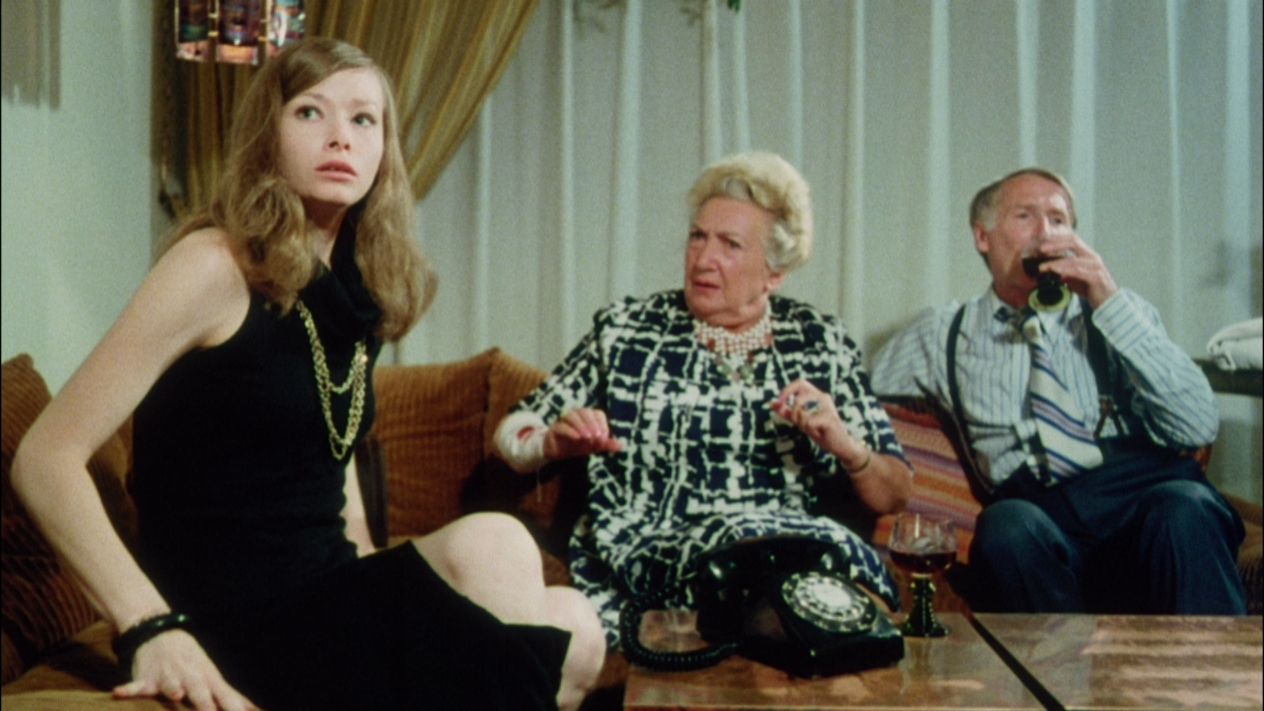
Cronenberg wrote and directed his own material in the first phase of his career – although he doesn’t subscribe to auteur theory on account of all the hands it takes to make a film. His scripts for Shivers and Rabid are straightforward in terms of narrative, if a little baroque in their speech. I don’t know if it’s a Canadian English thing, but Cronenberg’s dialogue is more florid and hyperarticulate than his yankee counterparts south of the Ontario border. It does serve the purpose of creating a surreal pitch. Take this passage from Shivers, for instance, where Nurse Forsythe is recounting a dream to Dr. St. Luc;
“Roger, I had a very disturbing dream last night. In this dream I found myself making love to a strange man. Only I’m having trouble you see, because he’s old… and dying… and he smells bad, and I find him repulsive. But then he tells me that everything is erotic, that everything is sexual. You know what I mean? He tells me that even old flesh is erotic flesh. That disease is the love of two alien kinds of creatures for each other. That even dying is an act of eroticism. That talking is sexual. That breathing is sexual. That even to physically exist is sexual. And I believe him, and we make love beautifully.“
Why simply talk about a clown chasing you in a dark corridor, when you could instead slip into a psychosexual reverie equating sex and death? Later in his career, Cronenberg would transition to adapting the existing works of others (pretty much from Dead Ringers forward), which I think sands down the grittier edges of his thought processes, although not by much. Still, there’s an essential Cronenbergiosity to his first few films, bursting with language and unmatched imagery.

Shivers eerily resembles J.G. Ballard’s 1975 novel High-Rise, wherein a luxury condominium building becomes a hermetic fortress filled with warring savages, driven mad by the experimental brutalist architecture. (Besides the fact that this film and that book were both coincidentally released in the same year, the Cronenberg/Ballard connections go further. The director would actually adapt the author’s 1973 novel Crash in 1996, and Dead Ringers leading man Jeremy Irons would go on to co-star in Ben Wheatley’s 2015 adaption of High-Rise.) Cronenberg uses the same setting – albeit in this case on Montreal’s Nun’s Island – and peoples his decadent condo-block with affluent philanderers and sexual adventurers. There’s a comment on the liberation of the 1970s, but Cronenberg augurs the horror of sex-borne death to come in the 1980s by coupling intercourse with a rapidly-spreading contagion which overtakes the mind. What begins with a (now) typical Cronenbergian element of medical experimentation on the body adapts into an actual sentient organ which wants to spread from host to host the fastest way it knows – bonking neighbors.
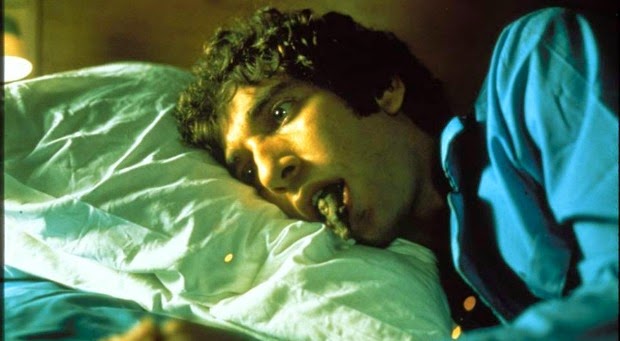
To recap: A thinking kidney crawls out of man by exploding outward through the gut and enters another person through the mouth, turning her into a libidinal madwoman. Pretty standard stuff here.
For a guy starting out in his career using the scant resources of a Canadian film grant program, Cronenberg makes something both polished and larger than his low budgets would suggest. There are barely any location shots, but few are needed – the work of showing the disease hopping from bedroom to bedroom can be told using sets which look as if they were repurposed from a daytime TV soap drama. Impersonally decorated and starkly overlit, these apartments certainly don’t look like anyone lives in them, yet that cultivates the surreal environment needed to develop Cronenberg’s dreamstate.
You want another facet of purely Cronenbergian genius? The man has an uncanny knack for inventing quasi-alien names for his dramatis personae. There is a line at the start of Shivers where a prospective tenant introduces himself to the broker by saying, “I’m Sviben Kresimer, and this is my wife, Benda.” I don’t know where these people came from, but it’s not from any province of Canada I’m familiar with. And foretelling more weirdness, there are two characters in Rabid named Murray Cypher and Dan Keloid. And how about Stathis Borans, Barry Convex, and Darryl Revok? That’s a short list of disconcerting people you know instantly not to trust.
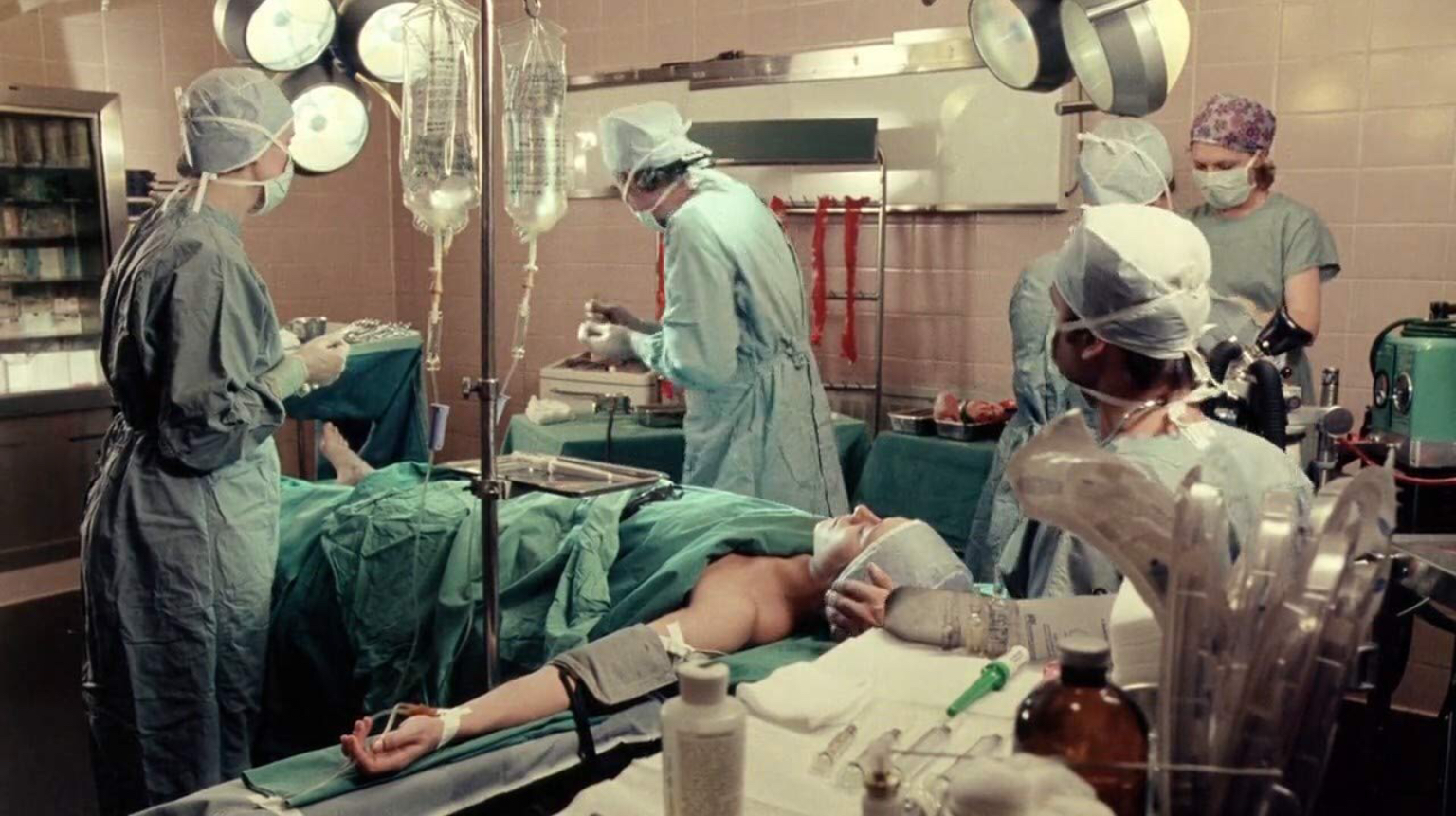
An additional thing about Shivers to note is the melodramatic performances by Cronenberg’s actors, something either owed to the condition of stock company actors available in Toronto and Quebec at the time, or perhaps a conscious choice by a director carefully limning his dreamstate via all means at his disposal. The actors over-emote and swan around like the best of Mario Bava’s 1960s casts (see Blood and Black Lace and Black Sunday for more), evoking that giallo energy for Cronenberg. As if to hammer the point, the director actually employs Bava’s own leading lady Barbara Steele in Shivers as a haughty, sapphic neighbor who thrashes around naked in a tub as the killer mutant kidney actually enters her body through the…
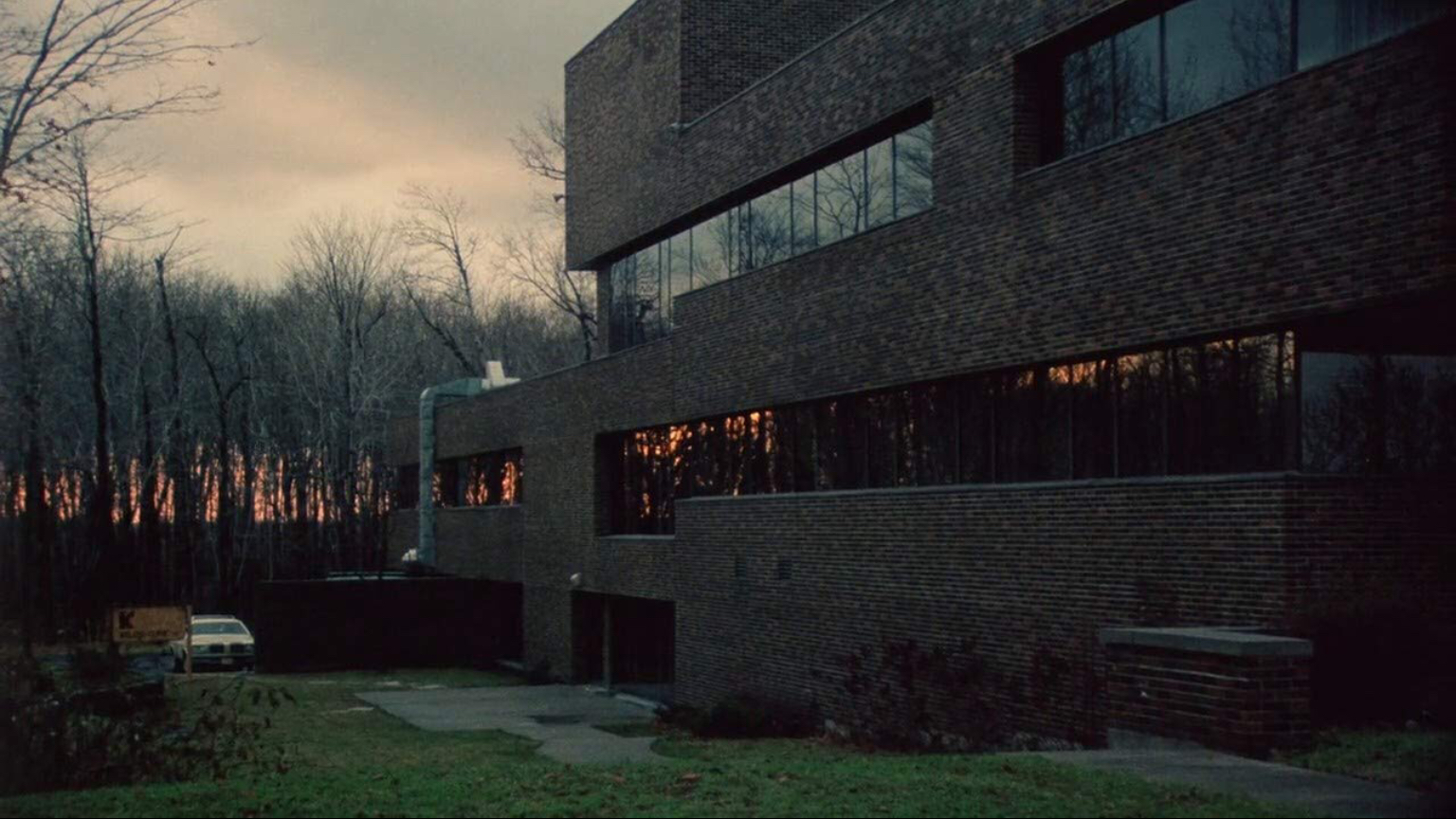
Shivers delivers on so many counts, but two years later when Cronenberg releases Rabid he scales upward the vision while maintaining his control of the narrative. The latter recapitulates many of the themes of the former – venereally-transmitted contagion; experimental medicine gone horribly wrong; lurid sexuality – while also reinventing the vampire story for the turn of the decade. The production values are essentially symmetrical to Shivers but much of the action in Rabid takes place in exteriors during the harsh Quebecois winter, making grander the world while also freezing the picture in the most desolate season. (Fun fact: Cronenberg’s first films were all shot at the end of the year because of when tax shelters became active for wealthier Canadians, promoting film-financing as a creative way of writing down one’s tax burden.)
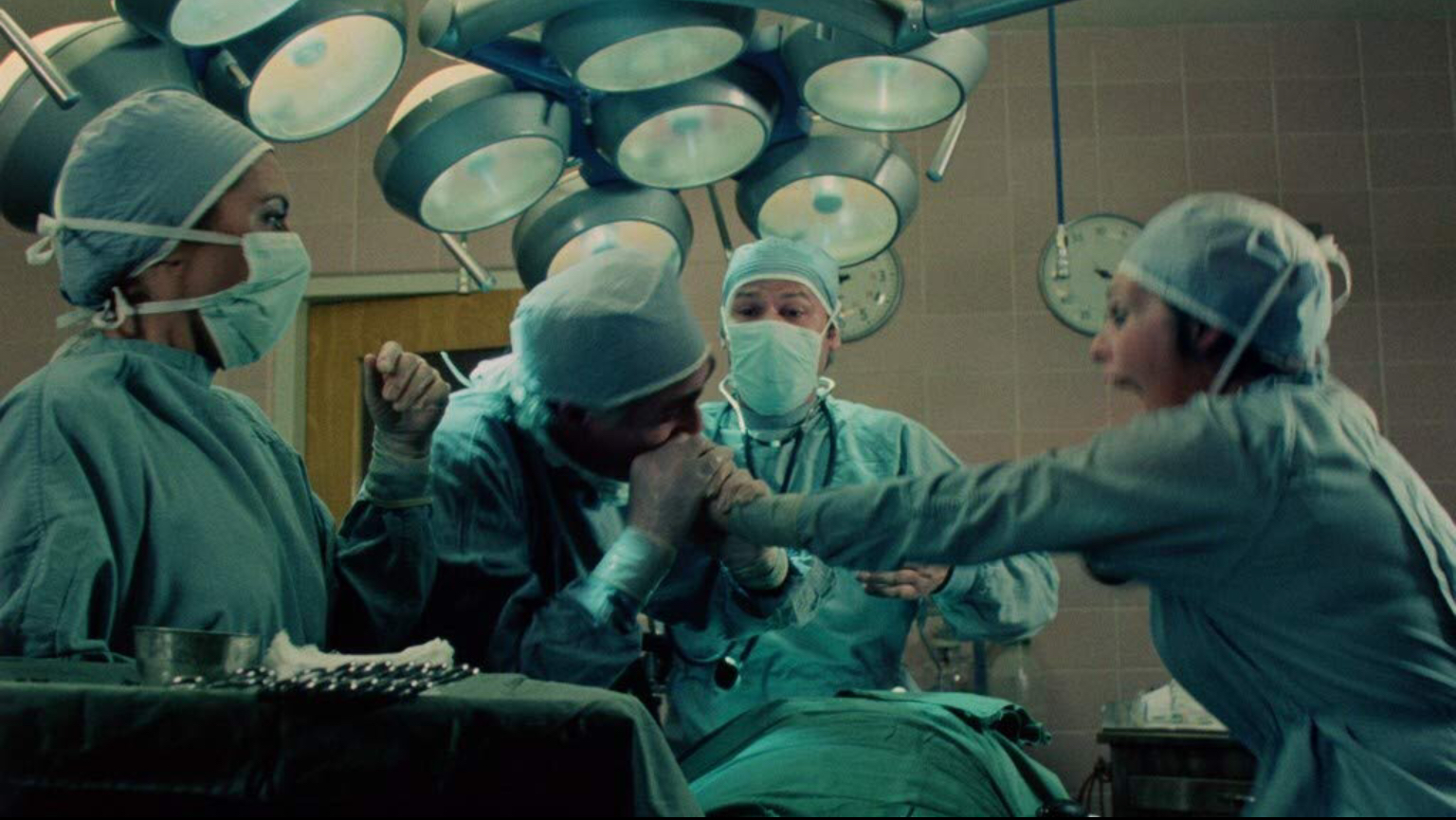
And something which can’t be understated is the casting of marquee porn star Marilyn Chambers (Behind the Green Door) as the lead, Rose. Cronenberg flirted with pornographic casting before (soft-core actress Lynn Lowery played Nurse Forsythe in Shivers), but the inclusion of Chambers pushes the sexuality foremost into the spotlight. As a vet of many a skin flick (and the second choice behind Sissy Spacek, improbably enough), Chambers doesn’t seem inhibited for a single moment in front of Cronenberg’s voyeuristic lens. She’s only featured nude in a few scenes, and then not even sexually, but she involves her entire body in a very natural physical performance. In that same way wrestlers like Dwayne Johnson, Dave Bautista, and John Cena have had luck crossing over into mainstream film, the same might be said of Chambers’ performance in this picture. She doesn’t hold anything in reserve.
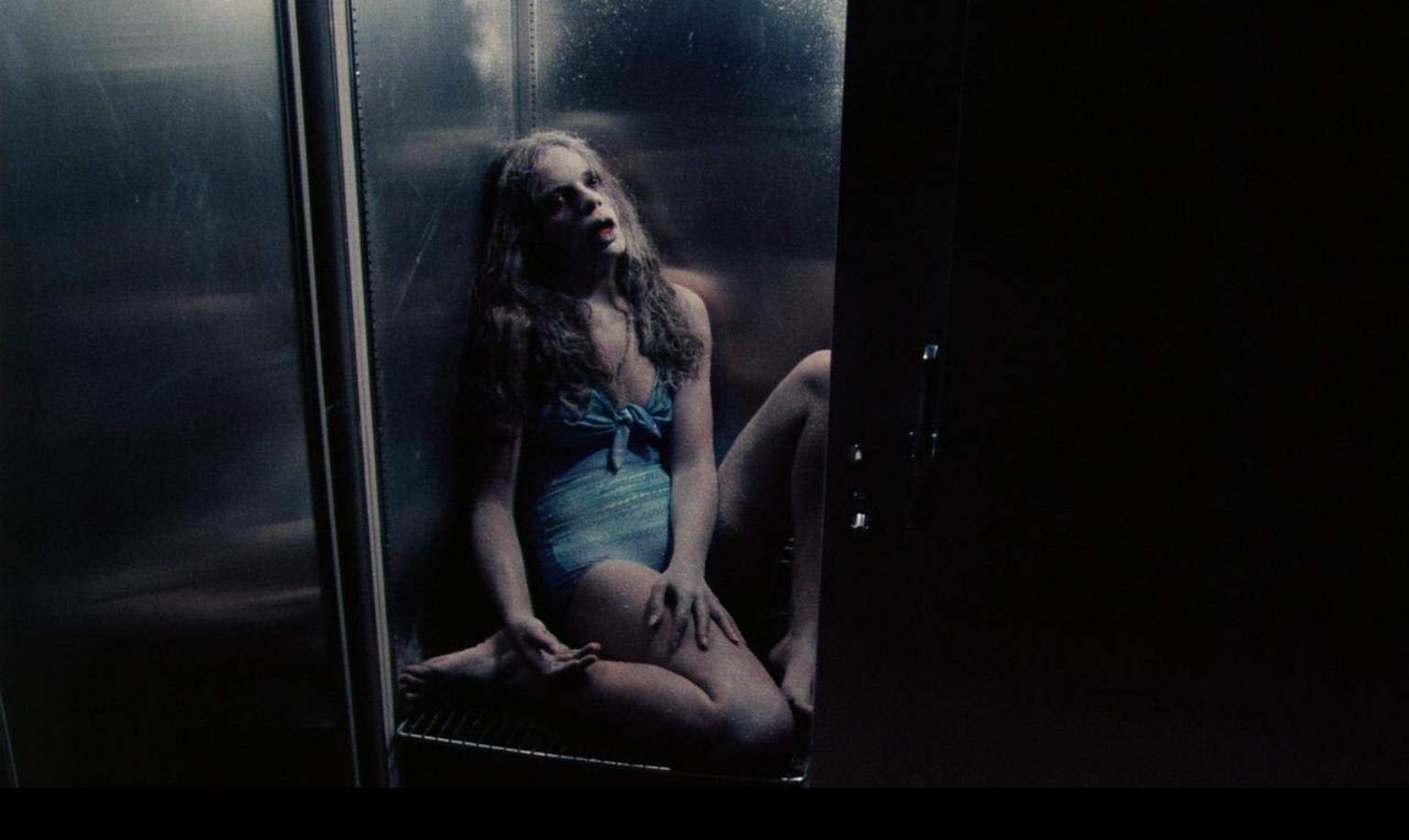
Chambers’ character Rose is altered after a catastrophic motorcycle accident into something unexpected by an emergency – and involuntary – medical procedure involving skin grafts. Somehow she winds up growing a telescoping needle-like jaw from under her armpit, which seems to emit from an orifice resembling an anus… or a vagina, I can’t decide which. The mutagenic transformation which saved her life gives her both a hunger for blood as well as a transmittable rabies virus for which she is a carrier. Rose begins the pretense of hooking up with Quebecois randos on the road from the countryside toward Montreal, only to lance them with her new organ and leave them foaming, snarling mad-dogs. Each infected attacks another person with tooth and nail, and so on and so forth until there’s a province-wide state of emergency.
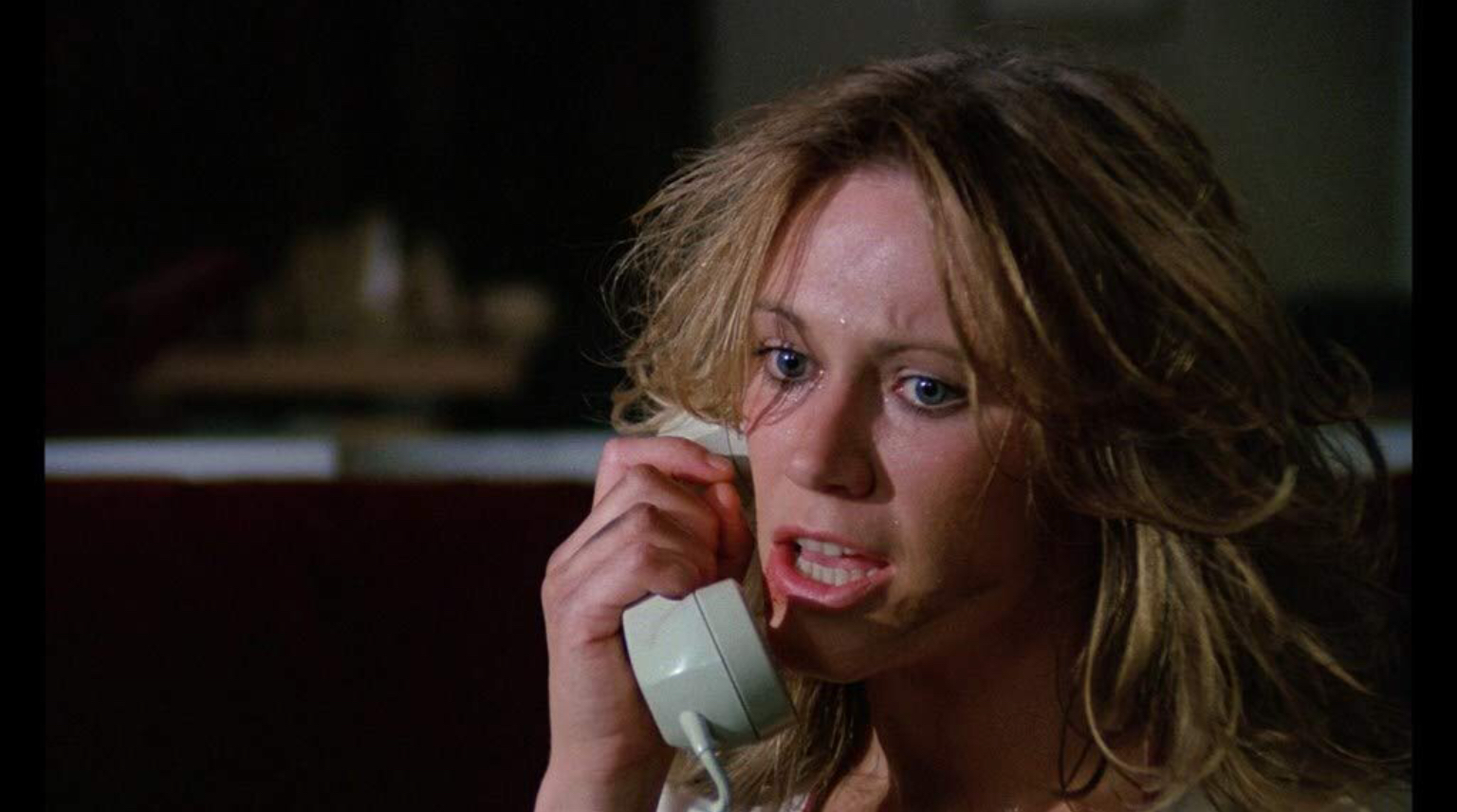
Cronenberg introduces a disturbing wrinkle into the sex/disease dynamic with Rabid: Rose is a non-complicit victim of the sciences, and her actions are not her fault. She’s acting on impulse to feed, and she’s totally unaware that her bite has a infective component. The male characters are on a seek-and-destroy mission to get Rose, but the viewer understands it’s a goddamn injustice – an innocent woman is being held responsible for the sins of men. She commits suicide in the final reel, offering herself up for destruction to a member of her own infected issue, to close the loop on the devastation.
As mentioned, Cronenberg stretches his budget to give the sense of a massive biological contagion. The roads are closed, bodies are hauled off the street and disposed of in garbage trucks, and garrisons of armed soldiers are positioned at cordons to stop the advancing hordes of infected. This is decades before 28 Days Later, and The Walking Dead. Cronenberg figures out exactly what needs to be in any single frame to sell us on the Big Idea, and he composes it masterfully. This is next-level stuff – and frankly, the exploding head bit from Scanners is great but feels like small potatoes by comparison.
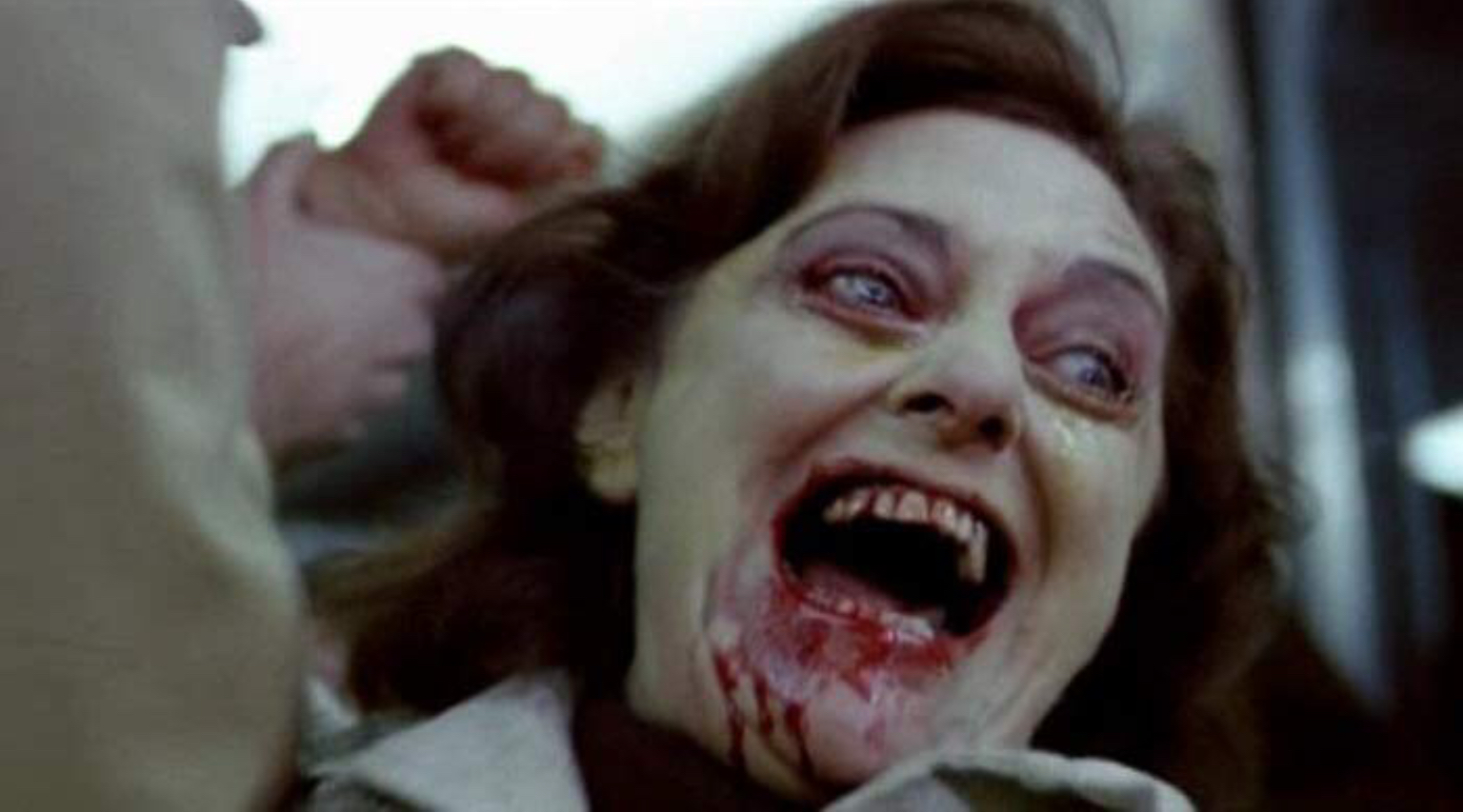
There are commingled themes of sex and disease laced throughout both films, as there will be for the next decade of filmmaking from David Cronenberg, but he practically invents a cinematic language of his own with Shivers and Rabid. The use of prosthetics and make-up in developing an aesthetic would suggest something closer to early Peter Jackson, Lloyd Kaufman, or Frank Henenlotter, but Cronenberg sidesteps the amateur and/or juvenile impulses of those filmmakers and creates his own idiom. It’s almost as if the addition of the venereal kicks the whole damn thing up a level, calling to mind Francis Bacon or Goya paintings. After this duo of films comes the aforementioned Scanners, the reputation-defining Videodrome, the Stephen King adaptation The Dead Zone, and the Oscar-nominated The Fly. For a Toronto-based filmmaker, Cronenberg became thusly established as a Hollywood brand by 1986, and his career rolls along with regular productions, well into his seventh decade on earth.
I enjoy Cosmopolis and A History of Violence as much as the next sicko, but I get wistful for the transgressive and boundary-free imagination which loosed a killer porn star on the icy tundra of Montreal. Let’s treasure these films for the miles of film frontier they helped to tame back in the day.
Shiver and Rabid are both available on Blu-Ray in the U.K. from Arrow Video, Shivers is available in the US courtesy of Shout Factory.

